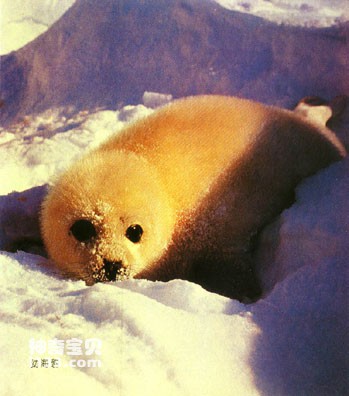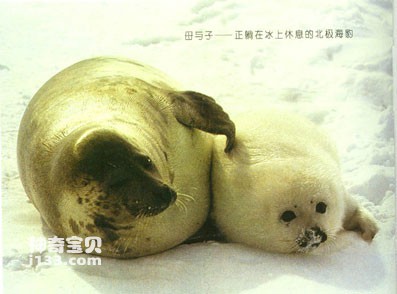There are 18 species of seals in the world, 7 species in the Arctic and 4 species in the Antarctic. But in terms of numbers, there are not as many Arctic seals as there are in Antarctica. All seals in the world have a spindle-shaped body, suitable for swimming, and a round head, which looks like a domestic dog.

Under natural conditions, seals sometimes swim in the sea, and sometimes come to the shore to rest in groups. Seals have strong swimming skills, reaching speeds of up to 27 kilometers per hour. They are also good at diving and can generally dive to about 100 meters. Weddell seals in Antarctic waters can dive to a depth of more than 600 meters for 43 minutes.
The seal society practices "polygamy". During the estrus period, male seals begin to chase female seals. A female seal is often followed by several male seals, but the female seal can only choose one from the male seals. Therefore, fights inevitably occur between male seals, and violent seals inflict violent injuries on each other: biting each other with their teeth, and some male seals' fur is torn and blood flows. At the end of the battle, the victor goes into the water with the female seal and mates in the water.
The breeding characteristics of seals are that they must go to land or ice to give birth, breastfeed, and raise children. The pregnant seal climbs onto the ice, gives birth to a baby seal, feeds it in time every day, and then takes good care of the baby seal. Since the baby seal was weak and had poor mobility at this time, the mother seal carefully observed the surrounding situation. When it discovers danger, it quickly pushes the baby seal into the water and then dives to escape; some seals are very smart and often drill a hole in the ice floe where they live so that they can escape at any time; sometimes when they encounter In a more urgent situation, when there is no time to push the baby seal into the water, the mother seal suddenly jumps into the air, breaks the ice with her own weight, and takes the opportunity to escape together. But more often than not, the mother seal escapes first, and then sticks her head out to watch carefully from a distance. If she finds that everything is safe, she quickly comes to the baby seal. If she sees the baby seal being captured, she often reluctantly leaves her. Watch where the little seal goes. In fact, the female seal has no choice but to do this, because in the long-term struggle for survival, if she does not do this, the mother and her son will perish together, which is very detrimental to the reproduction of the race.

Deep love between mother and son
The economic value of seals is extremely high. The meat is delicious and rich in nutrients. It is the favorite food of local indigenous people. The leather is tough and can be used to make clothes, shoes, hats, etc. to resist the severe cold. The fat can be used to refine industrial oil. ; The testes, penis, and spermatic cord of male seals are extremely valuable medicinal materials, commonly known as seal kidneys. It is a traditional Chinese medicine prepared together with other medicines. It has special effects of strengthening the brain and kidneys, producing sperm and blood, and aphrodisiac; the intestines are used to make piano strings. Excellent materials; liver is rich in vitamins and is a highly valuable tonic; teeth can be used to make exquisite handicrafts.
Because of this, seals have been severely hunted. In particular, the United States, the United Kingdom, Norway, Canada and other countries send numerous well-equipped sealing boats to hunt at sea every year. The number of many seals, especially Greenland seals and hooded seals, has decreased significantly.
In addition to hunting, marine pollution is also catastrophic to seals. For example, in the spring of 1988, a vicious incident occurred along the North Sea coast of Europe, in which nearly 18,000 seals died within six months. In the original area, it was due to ocean pollution that the seals' body resistance was greatly weakened, triggering an epidemic that claimed the lives of many seals. In recent years, there have been frequent reports of seal deaths caused by marine pollution.
animal tags:
We created this article in conjunction with AI technology, then made sure it was fact-checked and edited by a Animals Top editor.